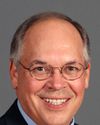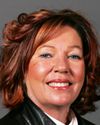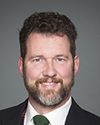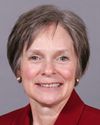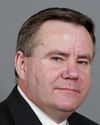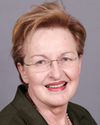Mr. Speaker, I am pleased to have the opportunity speak on this bill to maintain 10 seats in northern Ontario.
I have to politely disagree with my colleague, the member for Sault Ste. Marie, on the makeup of the political scene in northern Ontario. There are 10 seats there now. Somehow the NDP managed to confuse a few of the voters so a couple of them are held by NDP members. We are going to correct that in the future. At the same time, we made a very big mistake and we now have a Conservative representing one of the ridings, which has not happened too often, and we are going to correct that also. Mistakes made in the past can always be corrected and I think it is important for us to do so.
There has been a lot of talk about Bill C-290. In my speech, I am going to try to put a face on the bill.
Many provinces already have a guarantee of a minimum number of seats. It is very easy to do this, but when we consider the size of northern Ontario, which I will explain during my speech, it would be a big mistake for us to lose any representation, for us to actually have fewer MPs representing this huge land mass.
Northern Ontario is larger than many provinces. In fact, it is larger than many provinces put together. We have to be careful about what we do. We have to think about the people we are trying to serve.
I will explain some of the distances. In driving from Ottawa to my riding, for example, huge distances are involved. Many parts of Canada are like that, but if I want to drive home it is a 22 hour drive from Ottawa. Even then, I am not anywhere close to the edge of my riding by that time. It is still another 120 miles to the far edge of the riding.
These are absolutely tremendous distances. As people in Canada become more independent with the services that are provided through technology, they can live pretty well anywhere they want, so there are now people in these vast areas where in the past there were no people. The people are there now.
We have hundreds of small communities, both municipal and unincorporated. I will take a moment to explain that. Especially in southern Canada, many people would not understand what unincorporated communities are. These are places where individuals have chosen to live far beyond municipal boundaries. They live there for reasons of their own, whether it is the isolation or the beauty of the place, and they have very few services. Sometimes they band together to get road boards and they provide other services for each other, but the fact is that they want to live in these areas and they are prepared to look after each other. There are no basic structures there for them.
When persons travel across northern Ontario they recognize the diversity of the geography as well as the population. This is not unique to Canada in any way or to northern Ontario, but it shows us that as wild and as beautiful as northern Ontario is, its people are as diverse as they are anywhere in Canada.
We have many first nations communities in my riding. In my own particular area, we have the Ojibway. We have the Cree in the far north. They all come from different aspects and from different levels of service and they all need to be represented by their government.
Across the land we have many communities that celebrate their heritage. They celebrate where they come from in the world and how much they want to enjoy it. I am thinking of the Ukrainian communities and the Polish communities.
Everyone needs to be heard and everyone needs a voice.
We also have a diversity of issues. There are as many issues in our ridings as anyone in the south would have. MPs have to deal with these issues. We have all those and more, simply because of the isolation of northern Ontario. I am not explaining that as a detriment to living there. I am explaining it as one of the pluses of living in northern Ontario.
However, we have to understand that MPs need to serve their people. With the improvement in the information highway, it is a much bigger job for us than ever before. Any services that someone in the south takes for granted have to be hard fought for in the north. We do that job.
I will now talk about my own riding of Kenora. It is an absolutely gigantic land mass. In fact, it is the eighth largest riding in Canada. Sixty thousand people live there, fewer every year. It is about 321,000 square kilometres in size and is an absolutely massive area. The narrowest part is 300 miles wide and from top to bottom it is over 1,000 miles.
Scattered throughout that area are people living in municipal structures and in the unincorporated areas and with all the other challenges we have. These people deserve every right to have services. We provide them now, but we are not sure we can do it if there are fewer ridings in the north.
Maybe I should explain, too, that people can drive many miles through my riding, as most ridings in Canada, but when they hit the end of the road, it is about 600 miles to fly to the top of my riding. At the top, on Hudson Bay, is Fort Severn. Again, it needs service. The constituents need to see their MP. We need to do our jobs.
I am very proud to serve that area, but I want people to understand the sheer size and the challenge. It is rewarding, but it is also a challenge to ensure I am there. People do not want to see us once every two years or once during an election. We need to be there so the people can have confidence in us. We need to be there so they know they can come to us when there are problems. They need to know we will actually get something done on their behalf.
When one thinks of the size of the area, one can understand the difficulty of serving it.
I will speak about the communities now. Municipal communities that have the structure tend to have more services.
Kenora is the largest community, with 16,000 people. I want to remind members that there are only 60,000 people in the entire riding. There are a number of communities, Dryden, Red Lake, Sioux Lookout, Machin, Ignace, Pickle Lake, Sioux Narrows-Nestor Falls, all municipal structures. They all provide some level of service. They are all organized municipalities. They all try to serve their constituents. However, it is my job to try to serve them. This is area has been very hard hit by difficulties in the forest sector.
We do not want to leave anybody behind. They do not need less representation; they need more. Many of the issues that I have with the current government are about taking away things. These people need more service, not less.
There are a lot of smaller communities, too. In total, I have about 80 communities, places like Borup's Corners, Dyment, Oxdrift. They are extremely tiny, but they have the need and the right to see their MP as often as they can, and it is a challenge. They are beautiful, quaint, tiny villages. These are where the real people of Canada work. They are independent, strong, hard-working and they need representation. They need more, not less. Quite often the MP is the only government presence that they have in their riding.
When I show up in the communities, as often as I can, it is quite an event for them. Quite often in communities smaller than 100 or 200 people, community halls will have events for us. They need to see their MP. Therefore, we cannot have less MPs serving this area.
Again, I go back to the sheer size of this area. This is a massive chunk of land in Canada and it deserves the right to have MPs serving it. It has 10 right now and it needs to remain at that. As I say, there are many provinces that are not nearly as big as my own riding and they are guaranteed a certain amount of MPs. We need to maintain these areas. We have a presence there now and we have to continue with that.
I will speak for a moment about the first nations and what they believe they need service for.
The southern part of my riding is Treaty 3. It is Ojibway, led by Ogiichida Arnold Gardner, who is a tremendous leader. However, I service more than 20 communities there. These are all serviced by road. They all have the challenges that any other community would when 300 to 2,500 people live in a community. Yet they have many more challenges when they try to get recognized for some of the areas in which they do not feel they have enough service. There is an awful lot of work to do on those.
Then there is the far north. I mentioned the 21 fly-in communities. I am not sure if most members know, but there are rules in the House of Parliament where we can only travel for four days in our ridings. For me to go to these communities, it takes 21 days straight. I have to go home continually because I have to start the four day cycle again. If we took the population ratio that we try to use now, roughly 125,000 people, I would probably have 50 or 60 of these. How could anyone possibly service that? I would do it, but I am not sure if any of the other parties had representatives in that area who would be able to it.
Stan Beardy serves in Treaty 9. There are tremendous challenges, tremendous people, and it is a joy to serve them. Again, how much can one physically do if they lessen the number of ridings in northern Ontario? These people need representation.
A number of decades ago they were all connected. They now see what is in southern Ontario, southern Canada and the world. They want to be part of this. They want a share in what the world is doing.
Kasabonika has a tremendous leader in Gordon Anderson. He has his community thriving. It is an example in northern Ontario, and probably many places in Canada, of what can be done with strong local leadership. These people need to see their MP.
In Fort Severn, Roy Gray lives in one of the harshest areas next to some of my colleagues who serve in northern Canada. It is tremendously harsh and expensive to be there. These are the people who will be hurt if northern Ontario does not have the existing 10 ridings, if we have less representation.
In Fort Hope, Charlie O'keese is the chief. He is a tremendously good guy to work with, but he needs to know that his MP can show up when he needs him and he will not have 160 communities to serve instead of 80.
We need strong voices for Canada. We feel Northern Ontario is as deserving as any of the provinces or any of the other parts of the country that have a guaranteed minimum amount of seats. We need to remember that if Canada is going to have small-town Canada and rural Canada, it needs to support them. I think this bill would go a long way to making sure we maintain the 10 seats so we can do our jobs in an effective way that represents the needs of the people.

